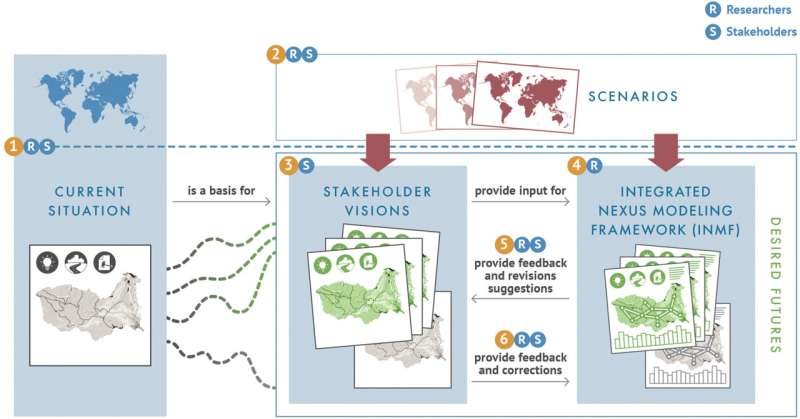This article has been reviewed according to Science X's editorial process and policies. Editors have highlighted the following attributes while ensuring the content's credibility:
fact-checked
trusted source
proofread
Innovative solutions for sustainability in the Zambezi River Basin

A new study addresses the urgent challenges in managing the water-energy-land nexus in the Zambezi River Basin, which is crucial for southern Africa's economic stability and environmental health. The authors of the article suggest strategies for economic development that protect environmental resources and adapt to climate and socioeconomic changes.
The Zambezi River Basin, the fourth largest basin in Africa, spans 1.4 million km² across eight countries: Angola, Botswana, Malawi, Mozambique, Namibia, Tanzania, Zambia, and Zimbabwe. The basin's natural resources sustain the livelihoods of more than 40 million people, although the region relies heavily on agriculture and faces high levels of poverty and food insecurity. Population growth and climate change could further exacerbate these challenges.
Current basin development plans lack an integrated and cross-sectoral perspective, potentially causing unintended impacts on other sectors, the environment, as well as neighboring countries. To address the Zambezi's nexus challenges, IIASA researchers combined policy-relevant stakeholder scenarios with integrated nexus modeling tools to identify key solutions for sustainable development in the Zambezi River Basin.
"Our analysis shows that sustainable development in the long run delivers not only significant economic benefits but most social and environmental benefits. It will require coordination and investments across the different sectors and downstream users to enable the basin countries to achieve their sustainable development goals for food, energy, and water security," explains study lead author Amanda Palazzo, a researcher in the Integrated Biosphere Futures Research Group of the IIASA Biodiversity and Natural Resources Program.
The study, published in a special issue of Environmental Development on IIASA and systems analysis in Africa, highlights various solutions, including increasing investments to increase irrigation efficiency, improve crop yields, transform smallholder agriculture, expand the conjunctive use of sustainable groundwater and non-conventional water sources to supplement low flows, and allow other sectors to take surface water priority, to achieve multiple development goals.
It provides crucial insights for policymakers to design strategies that foster economic growth while safeguarding environmental resources like water and forests, amid a dynamically evolving climate and socioeconomic landscape.
Through a stakeholder-driven approach, the modeling framework was developed as part of the Integrated Solutions for Water, Energy, and Land (ISWEL) project, supported by the Zambezi Watercourse Commission (ZAMCOM). ZAMCOM serves as the coordinating body for the basin, facilitating dialogue among the eight riparian states to align national investments and support sustainable development across the entire region.
By using integrated modeling tools, effective strategies can be identified—for example, coordinated water management strategies for both surface water and groundwater. These tools can capture the complexity and interdependence of land and water systems, making them important for understanding trade-offs and synergies in achieving cross-sectoral goals.
"Effective management of water, energy, and land resources is crucial for regions like the Zambezi River Basin, ensuring the well-being of millions and preserving biodiversity. This work contributes by offering science-based pathways that outline the costs and benefits of alternative development strategies, highlighting the genuine potential to strike a balance between economic growth and environmental sustainability," concludes Barbara Willaarts, a study co-author and researcher in the Water Security Research Group of the IIASA Biodiversity and Natural Resources Program.
More information: Amanda Palazzo et al, Assessing sustainable development pathways for water, food, and energy security in a transboundary river basin, Environmental Development (2024). DOI: 10.1016/j.envdev.2024.101030




















